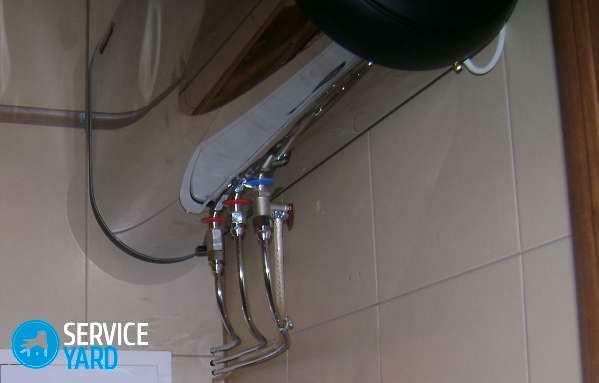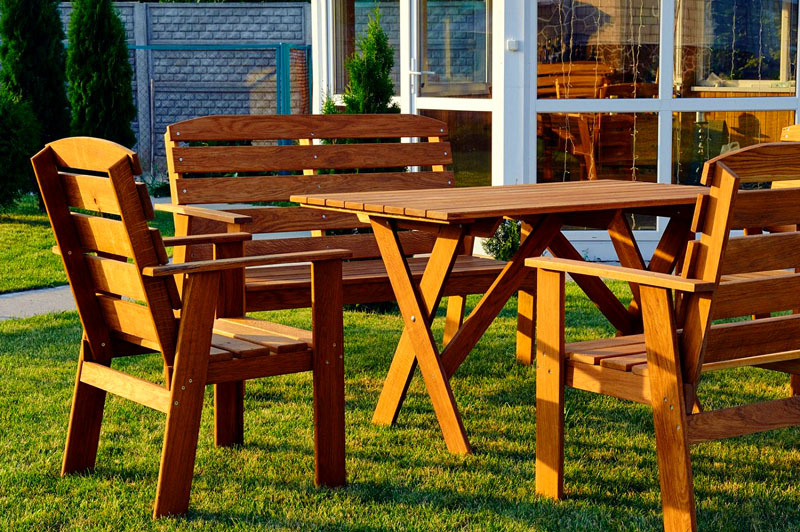
- Preparation of
- Study of
- device structure
- connection Useful advices
- Pros and cons of
If you purchased a storage boiler, you probably figured out the brands and models. It remains very little - to understand how to connect a storage water heater in the apartment. You can always ask for help in connecting the heater to the specialists, or you can do it yourself. With self-installation, you will have time to store, because even professionals spend about two hours to install boilers. To begin with, you should prepare well.
to the contents ↑Preparing the
The first thing you need to do before you start installing the device is to study the features of its design and the wiring diagram that must be applied to each model of storage heaters.
Attachment
Pay special attention to this item, it depends on it how comfortable and strong the boiler will be on the wall. Mounting can be both horizontal and vertical. Most often, the type of attachment depends on the volume of the drive.
Important! The most popular location is vertical, because it is easier to install by yourself, and in this form the device takes up less space.
to the contents ↑Exploring the design of the
At this stage, you should carefully read the accompanying documents to the instrument, and also know the basic elements of any heater to properly connect the storage water heater.
Elements:
- tubular electric heater;
- storage tank, protected by housing and thermal insulation material;
- thermostat;
- thermometer;
- parts responsible for the water supply - drainage pipes and water supply.
Important! Well, if in the kit there will be an additional fuse and a magnesium anode for replacement.
When the instruction is read and all the necessary components are in place, it remains only to follow the advice and connect the storage water heater yourself.
to the contents ↑Connection
First, open the connection instruction in which the water heater installation diagram is located and follow the instructions below to complete the following steps.
Determine the location of the
If the room allows, you can hang the device on the wall. In small spaces, devices are often mounted in niches or cabinets. It should be remembered that the device will require maintenance, so access to it must be open. 
Define the height of the
The standard recommendations dictate the placement of the device at a distance of about 30 cm from the floor, but this does not mean that there are no other options. Very often the boiler is placed above the toilet or over the bath, much higher than the recommended level.
Fasten the heater
If the volume of the boiler does not exceed 150 liters, then you can easily hang it on the wall. If the volume is larger, a floor installation is recommended.
Important! Please note that only a very light tank can be suspended on plasterboard walls - up to 50 liters. And if you are sure that the wall is reliable and can withstand a load of more than 100 kg - you can hang on it and a heavier device. Usually for these purposes, the load-bearing walls are chosen.
In the kit with the device you will find special bolts, intended for its fastening. They are bolts in the shape of the letter L. They are fastened to the rear wall of the heater, at a predetermined distance.
Important! With the vertical arrangement of the device, two bolts are necessary, with a horizontal one, four. Remember that vertical boilers can not be placed horizontally.
Installing the fuse
The fuse to the cold water outlet comes with the boiler. It protects the device from pressure drops and releases water if the pressure has exceeded the norm. If there is no fuse, the device can not withstand a high pressure and the tank will simply rupture. Accordingly - all the water will be on the floor.
Important! The fuses that come with the boiler are often not of high quality and are not very convenient to install. Therefore, if possible, get a good and safe valve separately. When selecting, pay attention to the possibility of discharging water through the valve into the sewer.
For installation simply screw the valve onto the cold water connection.
Posting of communications
Then the device must be connected to the water supply, and also to create conditions for its output.
Steps:
- In order for the heating element to last longer, use only filtered tap water for heating.
- Seal the valves. On the pipes for cold and hot water there are special closing valves. They must be carefully sealed. The best option for this is to choose a FSM tape or a pakli.
- Connect the communications. To connect the heater and mixer, you can take both metal-plastic pipes, and flexible options.
Important! Metalloplastik is more practical, but it can not be bent in any case.
Then the device must be connected and checked.
Connecting to the power supply
To connect the storage water heater, it is necessary to take a special cable, as the general wiring can not provide the device with the proper voltage. Next, the device is connected to the wires leading to the mains and verifies its operability.
Important! If you have difficulty connecting to electricity - call an electrician. So you will be sure of the reliability of the connection.
The following points should also be considered when installing the boiler:
- protection of outlets and cable against moisture ingress;
- device grounding;
- separate device for protective shutdown.
Important! The check includes filling the tank with water, heating it and studying the operation of the tank on water set, heating and possible leaks. If the check revealed shortcomings - the boiler is disconnected from the current and eliminated.
to the contents ↑Useful advices
Be sure to take into account and advice of professionals:
- Determine in advance the number of places for which water distribution from the boiler will occur.
- Before starting work, purchase all the missing materials so that in the process you do not have to run to the store urgently for specific details.
- Be sure to follow the instructions to your model.
- All water connections must be carefully sealed.
- If there is no possibility to install a protective drain into the sewage system, place a protective pallet under the device.
- If you do not provide for supply of tap water, the storage heater can be supplied from a separate container. It is fixed at a height of about 5 meters from the top of the device.
- Do not forget about preventive procedures - always change the magnesium anode at least once a year.
- If you leave for a long time, drain water from the heater, having previously disconnected it from the mains.
- Unless the tank is completely filled with water, it can not be plugged in and set the heating mode.
- Do not operate the appliance while it is connected to electricity.
- Use only those parts that are compatible with your model and are recommended by the manufacturer.
Consider the main advantages and disadvantages of storage water heaters.
to content ↑Advantages and disadvantages of
When it becomes clear with how to connect a storage heater, you should pay attention to its main advantages and disadvantages in comparison with flow models.
Advantages:
- Large supply of hot water, the volume of which depends on the specific model.
- Possibility of distribution of heated water to several points.
- Connection to power supply.
- For storage devices, the presence of high pressure of incoming water is not necessary.
- Good temperatures of heating( up to 85 degrees Celsius).
- Thermal insulation allows keeping the water heated even after disconnecting the device from the power supply, as in the thermos.
Along with the advantages, one can also identify the disadvantages of these heaters:
Cons:
- The long heating of the water is about half an hour, but it all depends on the volume of the tank. The larger the volume, the longer the heating will be produced.
- With a small consumption of water, additional energy is spent on its constant heating.
- Dimensional dimensions of instruments.
- If the installation fails, it is inconvenient to service the device.
- The service will have to be carried out regularly: cleaning the heater from the scale, replacing the consumables - these are quite labor-intensive activities.
- The cost of such devices is more expensive than running models.
Important! Water from this heater is not suitable for cooking and eating.
When choosing a heater, be sure to consider all the aspects associated with its installation. After all, if you decide to perform this procedure yourself, it is important to know exactly how to properly connect the water heater and what difficulties can be encountered during its installation. Do not rush, evaluate all the pros and cons of not only the device itself, but the way it is connected. Then you can easily cope with the task.


